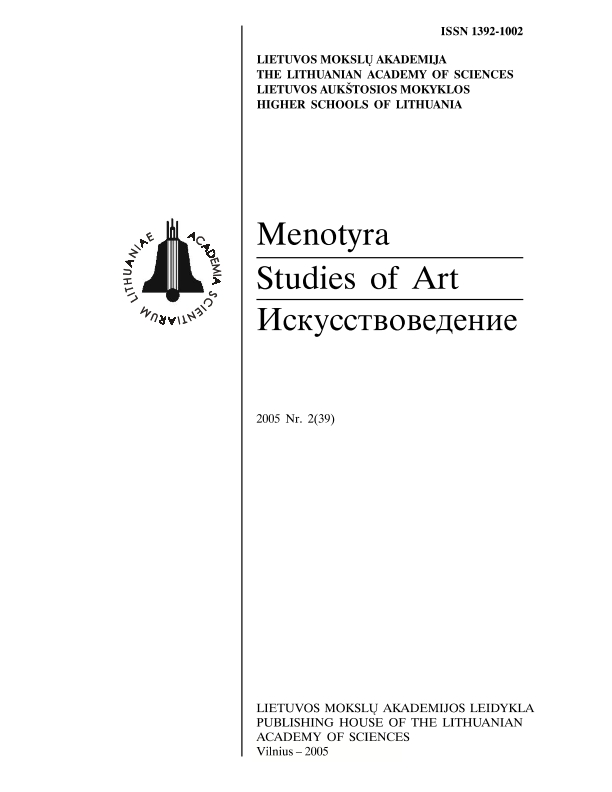Susimąsčiusio Kristaus atvaizdas XVII-XVIII a. LDK bažnyčiose: paskirtis ir paplitimas
The image of Christ in Distress in the 17th-18th centuries Lithuanian churches: the purpose and distribution
Author(s): Gabija SurdokaitėSubject(s): Christian Theology and Religion, Cultural history, Visual Arts, 16th Century, 17th Century
Published by: Lietuvos mokslų akademijos leidykla
Summary/Abstract: Only a few images of Christ in Distress from the 17th-18th centuries survived in Lithuanian churches (Skaisgiris, Vilnius Verkiai and Kaunas Theological Seminary churches). Historical sources, however, contain references to a large number of such images. This iconographical type is common in churches where depictions of Christ predominate or where at least some works of art contain Christological iconography.Early 17th-18th century images of Christ are devotional. They were placed in church porches (in Rasos, Dusetos, Plokščiai), chapels (Ukmergė and Vilnius Franciscan churches), side altars (Rogačiovas Franciscan Observant church and Vilnius Verkiai Dominican church), next to columns or in choirs (Tytuvenai, Vilnius Franciscan Observant and Krakės Catherinian churches, Mozyrius old order Carmelite church), where they could be watched at from a short distance.The spread of the image in the 17th-18th centuries is closely related to the growing piety towards the Passion of Christ. Therefore very often this iconographical type, at the core of which is the lonely seated figure of Christ, evolves into a narrative. Various saints are depicted with Christ: the Virgin Mary, St. John the Evangelist, St. Mary Magdalene, representatives of monastic communities, angels or Anna Christi. Analysis of such images has lead to an observation that they are not concerned with any particular moments of Christ's life, but instead symbolize the entire cycle of the Redeemer's sufferings.
Journal: Menotyra
- Issue Year: 2005
- Issue No: 2(39)
- Page Range: 17-22
- Page Count: 6
- Language: Lithuanian

